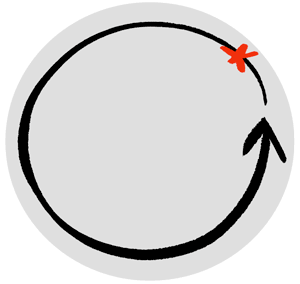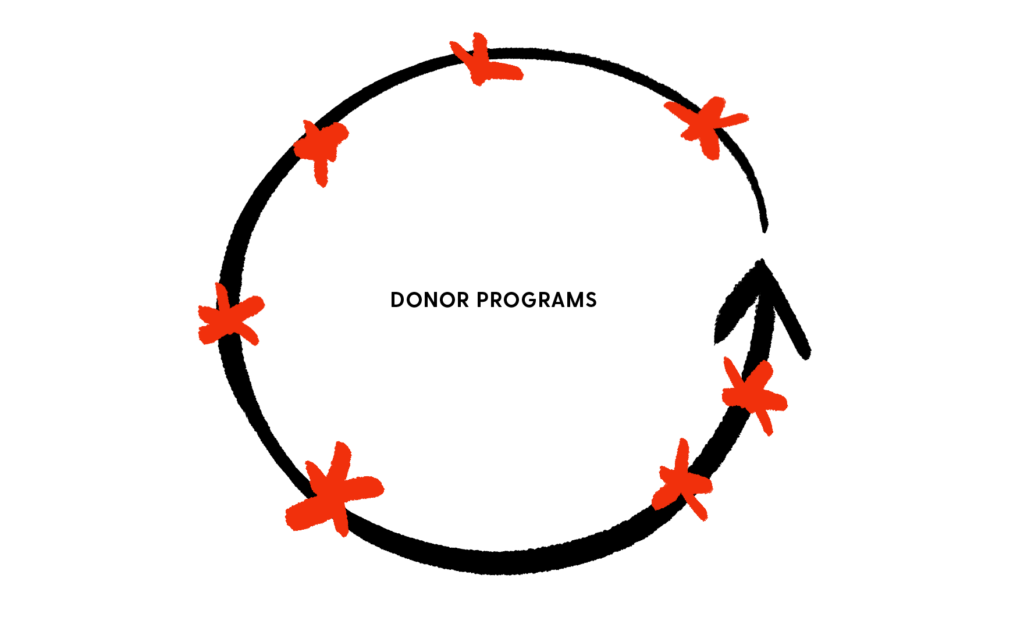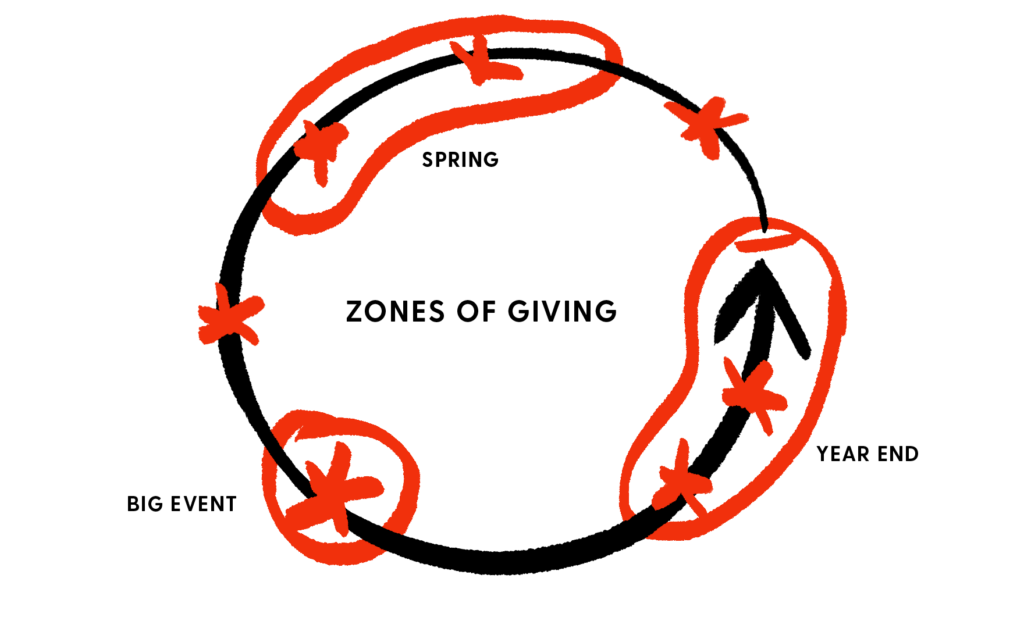- Josef Krebs
- Donor Relationships
Reading Time: 5 minutes
The Third Shape: The Cycle

The final shape of three in our series on fundraising theory is The Cycle. It is based on the revolutionary discovery that January comes after December every time.
Shocking, I know. But, of course, there is more to it than even that.
The Cycle is a map of your activities over a year. It’s round – not a to-do list. Nothing in the three shapes of fundraising theory is strictly linear.

The Spiral that we discussed is a spiral in part because a donor’s journey is at first partially defined by the cycles of giving, production, rest and planning that we see in this third shape. Further along the spiral, the shape implies an evolving, deepening relationship with the memories and investments that have defined that journey with you and your work.
And whereas The Web gives a spatial form to social relations, The Cycle presents spatial relationships between events in time. So let’s dig into what those events are.

The Giving Season
It may seem a little counterintuitive, but from a fundraising perspective we ought to start thinking about our cycle from the end of each year. At the end of the year, you will ask for money. This is a tradition that goes back far beyond any modern concept of fundraising or fundraising theory.
We have largely forgotten how dangerous winter used to be in the Northern Hemisphere, not just for those exposed to the elements, but to entire communities. When it got cold and there were no crops, families and communities shared resources to keep each other alive. Better off people hosted feasts to ensure that the less wealthy had at least one good meal going into the wintertime. Gift-giving was a way of providing vital resources.
These struggles aren’t abstract for many people in our communities today, but even in the more abstract sense, this season of giving is wired into us culturally, and we should be thinking about how to plan and make the most of it year-round.

Plotting Donor Programs on the Cycle
This isn’t just for performing arts groups who have a regular season that automatically comes with events. No matter what kind of work you do, you should start by plotting your programs on The Cycle.
If you are hosting regular public events, schedule parties with donors alongside those programs. It brings donors in to keep them seeing and feeling what you do. It also saves time to bring your donors together with your existing programs rather than doing standalone outreach. As we mentioned in The Web, this is also a crucial way for you to make introductions and build a community that is excited about each other around the work that you do.

Identify Additional Zones of Giving
Pick times to ask throughout the year. I think most organizations can make asks in three zones – once at the end of year, of course, to coincide with the traditional giving season; once at another time, and the data shows that spring is a good time to raise money; and once at a major annual event.
These three times of asking can be sustained by most organizations, and they can be plotted alongside your programs so you can see ways for your activities to drive funding results. That is, the buzz you build around performances or other events at these key times can make the ask easier for you and more effective.
Building Appreciation into Your Cycle
This can easily be done by making appreciation part of your annual reporting. For the purposes of fundraising, a well-written letter can be more effective than an annual report. It can be more exclusively mission-driven and specific in its language around impact and financial reporting, as the annual report is usually a high-level marketing tool above all.
That said, your budget and your fundraising methods all are an extension of the mission. They should always be treated as tools that support and refine your work, rather than distract or interfere with it.
Align your fundraising efforts around your programming calendar, and you will avoid wasting time and internal confusion about priorities.
Other Benefits of Cycle Thinking
At the outset of this blog series, I explained how the three shapes in this energy-based fundraising theory can be summarized as personal, communal, and temporal. Even focusing on just one of them can improve your clarity, planning, and confidence in that realm.
When it comes to The Cycle, the benefits to clarity and planning involve everyone in Your Org, its community, and its donors.
On the Blog we will also discuss how to use your budget as a tool for organization and planning, and this ties into thinking in terms of Cycles. If you have a goal that you can’t meet at this point in the Cycle, make clear that you will pick it up next year, and give yourself reminders to prepare. Plotting your year this way will give you greater clarity around goals and contingency plans.
Meanwhile, organizing by a Cycle creates predictable events that your community comes to anticipate. (But just because there is anticipation doesn’t mean you shouldn’t be proactive about making sure the word gets out well in advance for every event.)
Cultivate the Energy and the Love and the Money Grows
This is energy-based fundraising, not money-based. Remember, the money is a manifestation of the loving energy that you generate through this approach. Use the energy that The Cycle generates to bring people together in relationships in The Web, and pull them closer to you in The Spiral.
You are inviting people on a journey, one that will be marked by memories made year after year. The Spiral may have an end, but The Cycle does not.
Implicit in this is the legacy that will continue for many others who take the journey together. Have a reverence for that journey, and fundraising will be a source of delight rather than fear and uncertainty.


